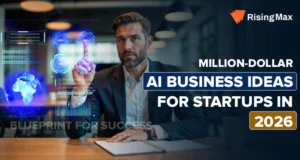The healthcare sector is on its toes to serve the world, and any mistake from the hospital’s end can put things at high risk. It can be anything from the shortage of medicines to expired medicines in stock. Thus, the healthcare industry must manage the supplies or inventories.
Inventories can be managed manually or via software, but in today’s world, using software to manage hospital supplies is a cost-effective way, as you don’t have to hire dedicated staff just to manage the supplies. Also using software for healthcare inventory management eliminates human errors.

Hospital inventory management software can automate stock control processes and better match supply with demand. It can supervise pharmaceuticals and medical supplies to improve healthcare supply chain efficiency and decrease medication waste. Medical inventory management software helps to keep track of inventories, transactions, bookings, payments, and other details.
Our Hospital-specific inventory management software offers many benefits, such as seamlessly integrating with the current IT infrastructure, allowing users to define user roles and permissions based on specific needs, and automatically reordering consumables and medications based on predetermined algorithms.
We at RisingMax provides the best solutions for healthcare industry. Get a free consultation for the hospital inventory system.Architecture Of Hospital Inventory Management System
The architecture of a hospital inventory management system is intricately designed to meet the multifaceted needs of healthcare facilities. This modular approach enhances navigation and allows for the efficient management of specific inventory categories.
Centralized Database
Utilizing a centralized database is the system’s backbone, offering a unified repository for storing and retrieving all inventory-related data. This centralized approach streamlines data management, promoting consistency and reducing redundancy in storing crucial information.
Module-based Structure
The system adopts a modular structure, organizing its components into modules such as medical equipment management, medication management, and stock level tracking. This modular design enhances the system’s flexibility, allowing for efficient navigation and targeted management of specific inventory categories, ensuring a tailored approach to diverse needs.
Real-time Integration
Real-time integration is pivotal, enabling instantaneous updates on inventory levels and statuses. This ensures that healthcare professionals have access to the most current information, facilitating prompt decision-making and reducing the risk of errors due to outdated data.
User Access Controls
Robust user access controls are implemented to safeguard sensitive inventory data and maintain the confidentiality of critical information. This security measure ensures that only authorized personnel can access specific functionalities, mitigating the risk of unauthorized data manipulation or breaches.
Improve The Management Of Your Life Saving Medical Equipment!
RisingMax can help you build custom Medical inventory management software with real time visibility. Stay on top of healthcare inventory management anywhere, anytime with us.
Solutions For All Hospital Inventory Management Needs
Features of the hospital inventory software are the major things that create a space to make the software successful. Here are the important features of the hospital inventory system that can affect hospital management.
The 7 major features are as follows:
- Stock Levels Tracking
- Admin & Control Panel
- Medicine Shortage/Expiry Notification
- Stock Request & Report
- Medical Equipment Management
- Medical Supply Management
- Auditing & Monitoring
Stock Levels Tracking
With this function, laborious manual searches will no longer be necessary, ushering in healthcare automation. It enables a user to quickly and easily check a specific item’s status at any moment with a click. Real-time monitoring of stock levels enables proactive replenishment and minimizes the risk of stockouts.
Advanced analytics and reporting functionalities provide insights into usage patterns, aiding in strategic decision-making for inventory optimization. This feature enhances operational efficiency, reduces manual workload, and minimizes the likelihood of errors associated with manual data entry.
Admin & Control Panel
The administration panel is one of the major things necessary for any software. The admin panel helps to look after everything and manage things centrally. With the help of the admin and control panel, the hospital administration can keenly see the usage and wastage of medicines, liquids, and medical equipment.
Doctors and nurses can monitor and manage their orders using this service from a single location. Doctors and nurses can utilize medical inventory software to make a list of the products they need to acquire in the right quantities, and they can view the status of each order on a convenient dashboard.
Medicine Shortage/Expiry Notification
The push and prior notice of the expiry of the medication will save a lot of the hospital management. You can add a notification of the expiry as per your requirement; you can add a notification of 3 months before the expiry, or 1 month or 15 days so that you can exchange the medicines and injection’s liquid accordingly. Expiration alerts are incorporated into hospital inventory software to warn users before it’s too late when certain medications are getting close to expiration dates.
Stock Request & Report
The hospital inventory management software is a 360-degree solution, even for minor things. When any medicine or injection is out of stock, a notification and reminder mail will be sent to the medicine supplier to fill up the supply of the medicines and injections or if any equipment needs to be repaired or replaced. This feature will add the benefit of checking out every mail and reminder for stocking up.
The stock report can be set per the management’s demand every 15 days, month, year, or quarterly. This will not only help maintain an overview of things but also help stop drug theft. Drug theft is one of the major issues that each hospital faces.
Medical Equipment Management
The system excels in efficiently tracking and managing the lifecycle of medical equipment, ensuring their availability when needed. It includes maintenance scheduling and usage tracking features, contributing to optimal utilization and reducing downtime.
Precision in tracking and administering medications is prioritized, reducing errors and enhancing patient safety. The system includes dosage tracking, expiration alerts, and patient-specific medication records, ensuring accurate and safe medication practices.
Medical Supply Management
The system oversees the end-to-end medical supply management process, from procurement to storage and distribution. It optimizes inventory levels through demand forecasting, minimizing excess stock or shortages, thus improving cost-effectiveness.
Automation streamlines routine tasks, such as order generation, restocking, and updating inventory levels. This feature enhances operational efficiency, reduces manual workload, and minimizes the likelihood of errors associated with manual data entry.
Auditing & Monitoring
Robust auditing and monitoring features are integrated to ensure transparency, regulatory compliance, and accountability. Comprehensive audit trails and real-time monitoring capabilities help identify irregularities, supporting regulatory adherence and enhancing overall governance.
Best Practices Of Inventory Management In Hospitals
This comprehensive approach to hospital inventory management encompasses the practical considerations and best practices that contribute to such a system’s successful implementation and sustained effectiveness within a healthcare environment.
Regular Audits
Regular audits ensure the accuracy of inventory records and identify areas for continuous improvement. Audits are a proactive measure to maintain data integrity, compliance with regulations, and adherence to best practices.
Staff Training
Continuous training programs are implemented to empower staff with the necessary skills for optimal utilization of the inventory management system. Well-trained personnel contribute to the effective use of system features, minimizing errors and maximizing the system’s potential.
Categorization & Organization
Effective categorization and organization of items are prioritized, facilitating easy retrieval and tracking of inventory. A systematic approach to categorization enhances workflow efficiency and ensures that items are stored and accessed logically.
Automation
The emphasis on automation extends to reducing manual errors, enhancing overall operational efficiency, and improving the accuracy of inventory records. Automated processes, such as barcode scanning and RFID tracking, contribute to a more streamlined inventory management process.
Why To Build A Hospital Inventory Management Software?
Nurses spend more time keeping track of medical supply inventories. Seemingly endless lists of supplies, tools, and equipment slow down the administrators that doctors must collaborate with. Automated hospital inventory management software frees up more time for healthcare practitioners and administrators to focus on the bottom line by eliminating the need for time-consuming spreadsheets and paper trails.
Cardinal Health’s research reveals that nearly a quarter of hospital employees have witnessed expired equipment used for patients. Nearly 60% of survey participants recalled that a vital medical item was missing from a doctor’s office. 18% reported cases where patients suffered harm due to insufficient supplies.
Hospital inventory management software helps in:
Easy Management
Status of available medical supplies usually keeps fluctuating because of unpredictable scenarios. The hospital inventory system makes things better and easier to track. The development of medical inventory software will help the hospitals and healthcare sector to maintain the stocks and supplies of medicines.
Reduced Medical Waste
The hospital inventory management system also helps eliminate the wastage of medicine and injections. Plenty of medical things get wasted without using them for once. And by using the hospital inventory software, you can reduce the wastage of such things. The software will take care of the stocks and usage of the medicine and medicinal equipment, shortage of medical equipment, the excess number of medicines or costly equipment or insulins, etc. It will also take care of the frequent or commonly used medicine so the hospital can stock up.
Most medicines’ wastage comes from injection liquids with a much shorter life span. When things come to the human end, it is not possible to maintain every single and minor thing. And developing hospital inventory management software can save a lot of hospitals.
Real-Time Tracker
Real-time tracking is made possible by the software’s built-in program, which means that the inventory is constantly updated and available whenever you add or use medical supplies.
Saving The Cost
Cost reductions come from streamlining your hospital inventory management system. The first benefit of using medical inventory management software is that it will save you from having nightmares about running out of supplies.
Additionally, it limits the use of medications. This is not the only one! The most significant development is automation. Before this, there was a sizable loss owing to stock-outs and overstocks. But no longer! The inventory management systems are to thank for this.
Recordkeeping
Chances are good that you will consider using a platform that can distinguish between the current stock and if it will be in demand in the future if you aren’t already using one. Here, records need to get checked regularly to ensure there is no room for error.
Automate your healthcare inventory management with our custom solutions and deliver quality patient care!!
Hospital Inventory Management Software Development Process
The hospital inventory management software development process is a comprehensive journey that begins with a meticulous needs analysis. This holistic approach ensures that the platform meets current requirements and remains adaptable to future challenges and advancements in healthcare practices.
Analysis Requirement
A thorough needs analysis is conducted to understand the hospital’s unique requirements and challenges. This initial phase involves collaboration with healthcare professionals and stakeholders to gather insights that shape the development process.
User-friendly Interface
The design phase prioritizes the creation of an intuitive and user-friendly interface to enhance user adoption and ease of navigation. User interface design involves iterative testing and refinement to ensure healthcare professionals can interact seamlessly with the system.
Real-time Tracking Features
Incorporating real-time tracking features is crucial for providing instant and accurate information about inventory items. Real-time tracking enhances the system’s responsiveness, supporting timely decision-making and ensuring the information presented is up-to-date.
Automated Alerts
Automated alerts are integrated to notify users of critical inventory levels, potential issues, or upcoming maintenance requirements. These alerts serve as proactive measures, enabling healthcare professionals to take timely actions and prevent disruptions in inventory management.
Rigorous Testing
The software undergoes rigorous testing to ensure its reliability, security, and seamless integration with existing hospital systems. Testing phases include functional, security, and performance testing to identify and address potential issues before implementation.
Post-Implementation Support
Post-implementation support is a continuous process, providing ongoing assistance, updates, and refinements to adapt the software to evolving needs. Support mechanisms include a help desk with the hospital to address emerging challenges and maintain system integrity.

Why Should You Choose RisingMax Inc.?
You have to hire a healthcare software development company for hospital inventory software development, and we are one of those. Healthcare software is a crucial thing to develop as it is one such software that has to be perfect.
We help the hospital to get its customized hospital inventory software. We are with
- 150+ developers
- 45+ designers
- 50+QA testers
- Individual team to handle the development procedure
- 24*7 customer executive
- 100% transparency
- Complete legal procedure
- Dedicated project managers
Get in touch with us for the development of the hospital inventory system with perfection and manage the complete hospital in and out with just one click.











